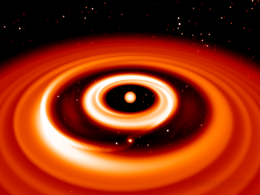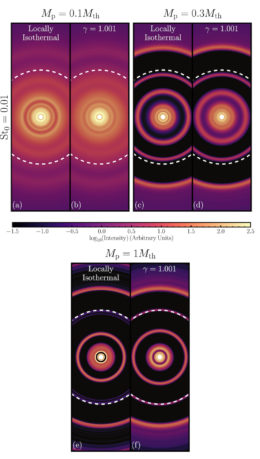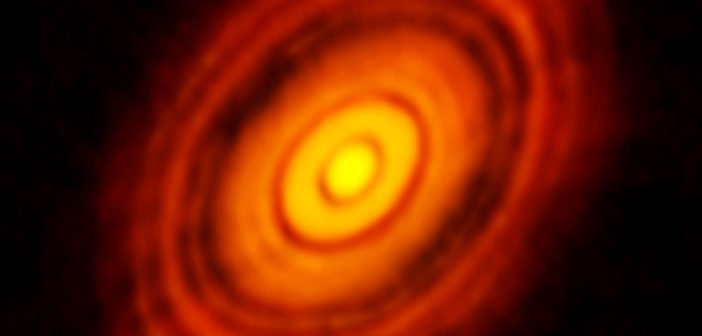The stunning substructures of gaps and rings revealed in protoplanetary disks have been attributed to the motions of hidden, newly formed planets. But are we interpreting our observations correctly?
Models of Structure

This simulation shows a Jupiter-mass planet forming inside a circumstellar disk. [Frédéric Masset]
Multiple explanations for the origin of these structures have been proposed, including snowlines, flows driven by magnetic fields, gravitational instabilities, or dust trapping. But the most popular model suggests that the gaps are driven by the motions of young, invisible planets embedded in the disks.
Challenging Assumptions
Recent studies have suggested that multiple gaps and rings can actually be produced by a single embedded planet. Simulations show that as a planet moves through the disk, it excites multiple spiral density waves. Interactions of these waves with the disk can then carve out several narrow gaps.
But while the basic idea behind these simulations seems sound, two scientists from the Institute for Advanced Study, Ryan Miranda and Roman Rafikov (also of University of Cambridge, U.K.) suggest we need to be a little more careful in how we interpret them.

Three of the authors’ simulations comparing locally isothermal (left panel of each pair) and non-isothermal disks (right panel of each pair). For low-mass planets (top two pairs), locally isothermal simulations overestimate the contrast of structures. For high-mass planets (bottom pair), locally isothermal simulations also misrepresent the locations of rings and gaps. [Adapted from Miranda & Rafikov 2019]
Massive Interpretations
What quirks does this assumption introduce? By running a series of comparison simulations of a planet interacting with a locally isothermal and a non-isothermal disk, Miranda and Rafikov show that locally isothermal simulations tend to overestimate the contrast of ring and gap structures produced. This means that using isothermal models to interpret ALMA results would cause us to underestimate the masses of the planets causing the disk structure observed.
What’s more, the authors find that for large planets, the isothermal simulations also misrepresent the locations of the rings. The results in this article suggest a strong need for caution when using locally isothermal simulations to explore the interactions between planets and disks. We’re certainly getting closer to understanding the many complexities of planet formation, but we’ve still got plenty of work to do!
Citation
“On the Planetary Interpretation of Multiple Gaps and Rings in Protoplanetary Disks Seen By ALMA,” Ryan Miranda and Roman R. Rafikov 2019 ApJL 878 L9. doi:10.3847/2041-8213/ab22a7

4 Comments
Pingback: Reinterpretando los huecos producidos por planetas – Observatori Astronòmic
Pingback: Julio 2019 – Observatori Astronòmic
Pingback: Reinterpretando los huecos producidos por planetas « SEDA / LIADA - RedLIADA - Cursos LIADA - Cielo del Mes - Fenómenos Astronómicos - RELEA
Pingback: Reinterpretando los huecos producidos por planetas « Sección de Astrofísica de la LIADA